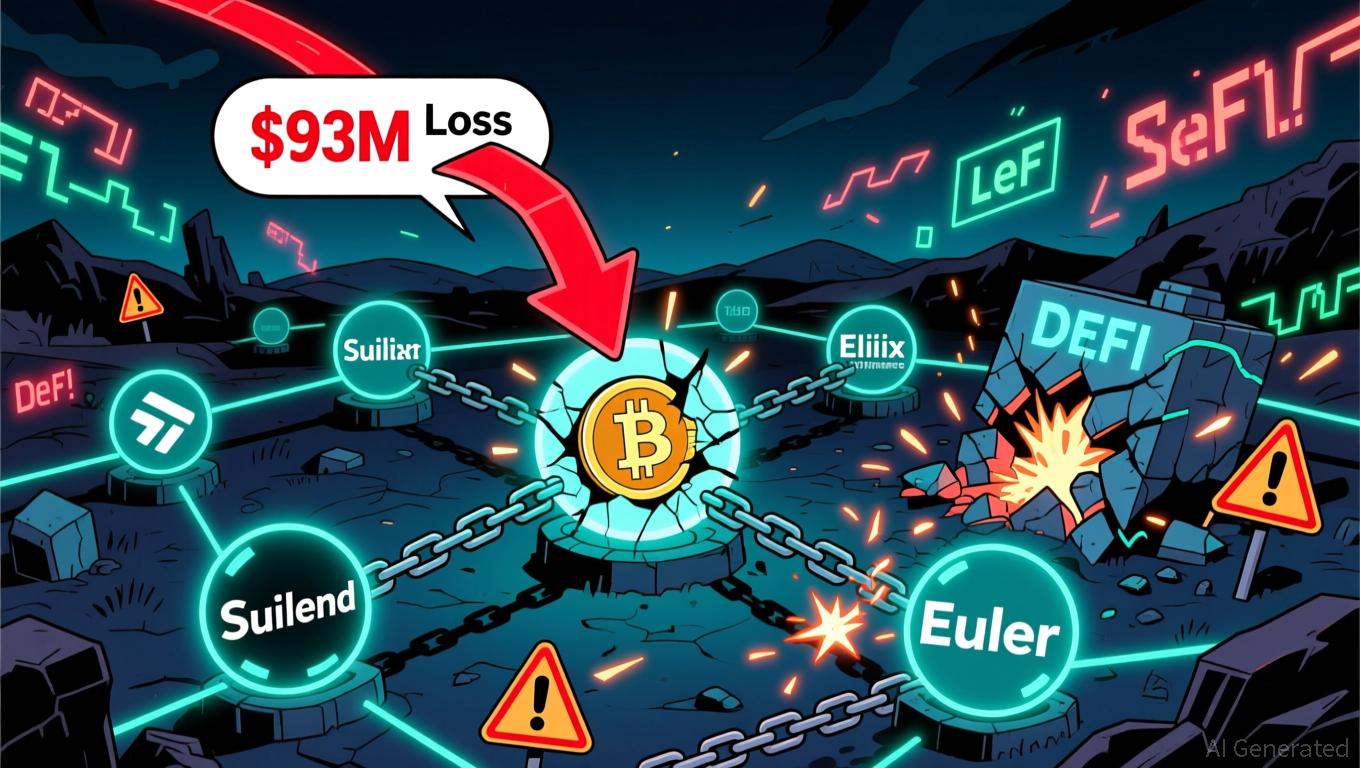DeFi's Inherent Risks Prompt a Governance Overhaul
- Curve community proposes halting CRV token emissions to Elixir pools amid deUSD collapse linked to Stream Finance's $93M loss. - Elixir's synthetic stablecoin lost 98% value after 65% collateral tied to Stream's devalued xUSD, triggering liquidity freezes and legal disputes. - DeFi platforms like Suilend and Euler forced debt repayments while Stream's 90% deUSD control blocks resolution, exposing systemic governance flaws. - Industry warns interconnected stablecoins and opaque fund managers pose $3.1B an
The Curve community has put forward a proposal to halt the allocation of
Stream Finance, a significant entity in the Sui network, revealed last week that an external fund manager was responsible for a $93 million loss in user funds, setting off a domino effect among related protocols. The company, which issues the stablecoin-like xUSD, has paused both withdrawals and deposits and has hired Perkins Coie LLP to investigate. Lending protocols Suilend and Elixir, both of which had loans secured by Stream’s assets, responded quickly. Suilend suspended Elixir’s isolated market and called for immediate repayment, while Elixir started reducing its $68 million exposure to the now-depreciated

This crisis has brought increased attention to DeFi’s dependence on non-transparent fund managers and interconnected stablecoins. Data from PeckShield indicates that 20 platforms were exploited in September 2025 alone, with losses exceeding $127 million—a 22% decrease from August, but still contributing to a yearly total of $3.1 billion. The Stream case highlights risks beyond technical vulnerabilities, as many in the community suspect internal mismanagement rather than a hack. “This is not merely a smart contract issue—it’s a failure in governance and oversight,” said Mikko Ohtamaa, co-founder of Trading Strategy, who pointed out accounting errors in simultaneous transactions, according to Cryptopolitan.
The repercussions reach further than just Elixir and Stream.
Elixir’s recent moves have also led to legal threats. K3 Capital has warned of possible legal action, claiming that Elixir misrepresented its $68 million loan to Stream, effectively turning it into a “tokenized fund-of-funds” without sufficient risk disclosure. Blockchain data reviewed by Yields and More (YAM) suggests Stream’s actual exposure to deUSD was closer to $11 million, raising concerns about the accuracy of Elixir’s financial statements, according to a
The Curve proposal to end CRV rewards is intended to reduce further risk by discouraging liquidity in pools connected to unstable assets. Supporters believe this is essential for safeguarding the Curve platform, while opponents fear it could hasten Elixir’s downfall, leaving remaining investors with few options.
The ongoing
With DeFi losses surpassing $3 billion in 2025, investors are increasingly seeking out protocols that have undergone audits and are diversifying their holdings. The outcome of the Curve community’s vote on the Elixir gauge proposal may set a new standard for how governance frameworks respond to systemic threats in a sector still confronting its own weaknesses.
Disclaimer: The content of this article solely reflects the author's opinion and does not represent the platform in any capacity. This article is not intended to serve as a reference for making investment decisions.
You may also like
xStock's total trading volume surpasses $10 billion
The US spot Ethereum ETF saw a net outflow of $183.86 million yesterday.
US SEC Chairman Announces Token Taxonomy Plan
Trump: Government shutdown caused $1.5 trillion in losses